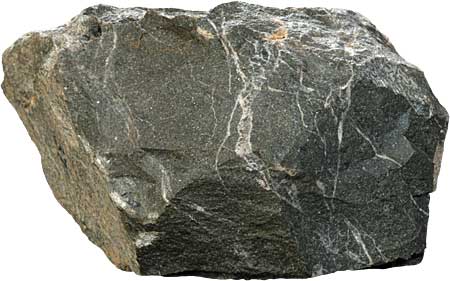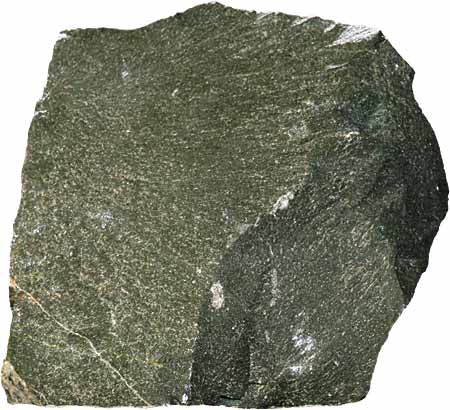Greywacke
Greywacke is a variety of argillaceous sandstone that is highly indurated and poorly sorted. It comprises a large percentage of the basement rock of New Zealand, and so is an important rock type throughout the country. Because it has been subjected to significant amounts of tectonic movement over a long period of time (some New Zealand greywacke is over 300 million years old), greywacke is commonly extremely deformed, fractured, and veined. Although greywacke can look similar to basalt, it differs in that it is commonly veined (with quartz being the vein mineral), and lacks vesicles.

greywacke |
Other specimens - Click the thumbnails to enlarge 

|
Grain size - < 0.06 - 2mm, clasts typically angular, visible to the naked eye.
Hardness - hard.
Colour - grey to black; often with white quartz veins.
Clasts - quartz, lithics, minor feldspar ( orthoclase, plagioclase), pyroxene ( augite), mica ( biotite, chlorite, muscovite); often quartz veins visible.
Other features - gritty to touch (like sandpaper), often veined, non-vesicular.
Uses - widely used as aggregate, fill etc. in the construction and roading industries; as armour rock for sea walls etc.
New Zealand occurrences - main axial ranges of the North and South Islands; interbedded with argillite.

